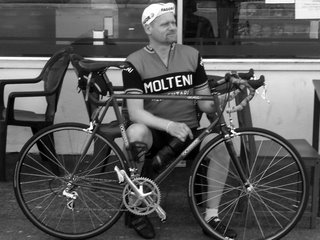Once again, I am blowing the cobwebs off this project. Over the next weeks I will try to weave together some new (to me) thinking about what it means to build theory about education. At one level, this is fairly tedious work. The aim is to reign in my own experience as a teacher and program developer and try to see the space of the classroom/college from the standpoint of a sociologist or anthropologist. For better or for worse, a career in teaching rhetoric and literature appears not to have involved this sort of discipline (or it did and I resisted).
At another level, this work is what interrupted by career as a teacher of rhetoric and literature and convinced me to be a student again. Over the past week, I have been squirreling away hours to (re)read Jameson’s 1991 book on postmodernism. There, in the machinations of a philosopher/literary critic/linguist/cultural critic, I am circling back on my assumptions about imagining a project now here in the 21st century. Jameson’s willingness to thinking aloud about thinking from where he stands is, for me, evocative. He wonders about being a Marxist in a postmodern setting (not himself able to engage in good pomo reification); I wonder, with a good deal of guilt and even less facility with reification, about noodling with philosophy in order to think about spaces for teaching and learning. My knee-jerk response is simply to teach and learn and figure out the space as the activities happen (my current guilt grows from doing this writing instead of the work of teaching and learning). On reflection, though, I am haunted by the limitations of spaces of teaching and learning. It is a foregone conclusion that a social arrangement (dare I still say, a culture) constitutes what can and cannot be talked about and perhaps what relations between things can be imagined—the open question really is to what extent “individual freedom of movement” is possible within these spaces. I suspect that movement or resistance or what Jameson calls “permanent revolution in intellectual life” depends on an examination not of static notions of truth and validity but on the historical conditions of possibility. Just teaching and learning absent such reflection is reproductive. It can lead where we want to go, where individuals want to go, but it can as easily lead us down paths we had not expected. Habermas notes that the fascist Karl Schmitt was a legitimate student of Weber.
And so, I plan to spend some time coming to terms with what it means to theorize teaching and learning spaces (to arrive at propositions concerning the relations between important factors) without violating the human practices of teaching and learning. My initial guide is Kris Gutierrez and the thinking that she has done concerning “third spaces.” She and her colleagues made a careful study of California classrooms and began to tease out “differences in involvement, participation, and learning” because they were attuned to interactivity (rather than static measure of development) and took as axiomatic that interactions involve “multiple social spaces with distinctive participation structures and power relations.” Explicit in this axiom concerning interaction are two basic assumptions. First, learners and teachers bring their worlds with them into the classroom and that learning (and by extension teaching) involves changes in the horizons (organizations of meaning including notions of what counts as knowledge) of learners and teachers but also in the horizon of the classroom (and the discipline itself). Second, sense making is triggered by unresolved tensions and dilemmas. Gutierrez has acknowledged that these assumptions are the result of riffing on Vygotsky to account for intersections of diverse activity systems and not simply individuals.
What my friends who approach social reality with numbers in mind might call “factors” come into view here: involvement, participation, and learning but also multiple and irreducible “activity systems” and power relations and dilemmas. How are they related? Gutierrez offers metaphors (a struggle for intersubjectivity that can be seen in Wells’s semiotic apprenticeship or Gee’s tool kit or Gutierrez’s own notion, “social dreaming”).
The determinate relations between variables remain fuzzy for me. Gutierrez’s data comes from groups that I do not study. Still, there is a brash attempt at totalizing here that I like. I am taking it next into more directly Marxist thinking about social space to see if I can push the assumptions closer to the economic and to history.

No comments:
Post a Comment